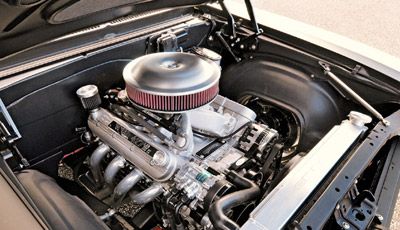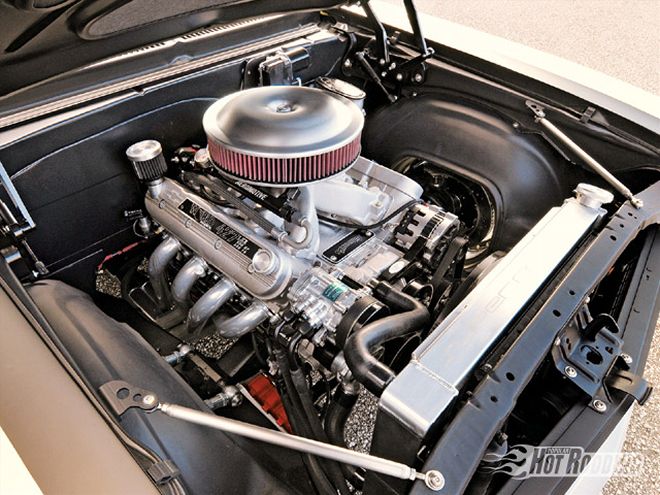

Think of it as cellulite removal for sheetmetal. At its core, a firewall is nothing more than a barrier that prevents a car's occupants from getting too toasty. It's been known to seal the cabin off from stinky fumes and toxic fluids on occasion as well. Given its utilitarian nature, the landscape of a firewall is characterized by undulating topography and unsightly holes. There's nothing pretty about it. While that's fine for a production car, spending a little bit of time smoothing that sucker out is a great way to score a ton of style points with your project car. Best of all, anyone with some basic welding skills can pull it off. All it takes is some advanced planning.
For some helpful pointers, we watched closely as the crew at Precision Coachworks reprofiled the firewall on Air Ride Technologies' '70 Nova. For those who may be hesitant to go crazy with a cutoff wheel, smoothing out a firewall is a low-risk, high-reward endeavor that doesn't require the skill of an expert bodyman. "I wouldn't put a high degree of difficulty on a project like this because we're talking about a relatively small area of the car," explains John Hemmer of Precision Coachworks. "The firewall is much stronger than the fenders or quarter-panels, so it's harder to inadvertently warp. Plus, since the motor will cover most of the area you're working on, even if it isn't perfect and there are a few flaws, it's no big deal and it will still look a lot better than stock. Even if you aren't completely comfortable doing bodywork, a project like this is very feasible."
That said, smoothing a firewall requires a fair amount of advanced planning, and many of the procedures outlined in this story are specific to Air Ride's project Supernova. For obvious reasons, it's best to plan on tackling a job like this while the motor is out of the car and before the body has been primered. More importantly, the holes that can be plugged and the areas that can be flattened depend on exactly how the car is configured. For instance, different types of steering columns, pedal assemblies, shifter locations, master cylinders, and A/C systems all impact where the cutting and welding will take place. Likewise, many of the holes in a firewall were punched by the factory simply to run wires through, so carefully routing your wiring to one or two central points will allow plugging up more holes and yield a much cleaner finished product. By taking time to plan ahead, you'll be able to turn lots of heads on cruise night once your project is complete.